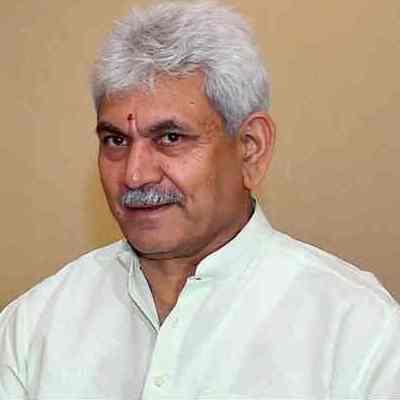  The Narendra Modi-led NDA government's spending on telecom infrastructure has been increased to six-fold to Rs 60,000 for the 2014-19 period, and it had taken various industry-friendly initiatives, according to a year-end review by the Ministry of Communications.
"There is a six-fold increase in government spending on telecommunications infrastructure and services in the country from Rs. 9,900 crores between 2009-14, to Rs. 60,000 crores (actual and planned) between 2014-19," the statement issued by the ministry Wednesday said.
Foreign Direct Investment (FDI) in the sector has increased to $6.2 billion in 2017-18, from merely $1.3 billion in 2015-16.
In a holistic review of the telecom sector at the 2018 end, Manoj Sinha-led department of telecom (DoT) outlined a number of initiatives taken during the tenure since May 2014 that included availability of adequate spectrum and connecting the unconnected in the country.
"Telecom service providers now have sufficient spectrum available to offer their services; the regime of spectrum shortage is a thing of the past," the statement added.
The department has allowed spectrum sharing and trading, and harmonisation in addition to passive and active infrastructure sharing, and took steps to reduce financial stress on the sector by way of deferred payment liabilities which is now extended to 16 years from 10 years earlier.
Among other schemes, the Centre, according to the statement, was able to implement full mobile number portability and took steps towards ease of doing business and facilitated Right of Way (RoW) rules.
The department also said that the tariff reductions by incumbent telcos during the period have benefited the consumers.
"Average voice tariff declined by 67% – from an average per minute tariff of 51 paise in June 2014 to 11 paise in June 2018," it said, adding that average data tariff declined by 96% - from Rs 269 per Gigabyte (GB) in 2014, to Rs. 12 per GB in June 2018.
The disruptive foray of billionaire Mukesh Ambani-owned Jio in Septemeber 2016 has led to a steep fall in voice and data tariff by incumbent players including Bharti Airtel and state-run Bharat Sanchar Nigam Limited (BSNL), and that has also triggered industry consolidation with No 2 Vodafone India and No 3 Idea Cellular merging together to create country's largest telco.
The sector is sitting on a debt of Rs 7 lakh crores, and want next spectrum sale to be dragged.
While the government sees the disruptive entry of Mumbai-based telco as consumers benefit, industry's consolidated revenue has slipped during the consecutive quarters following the foray.
With the smooth and transparent auction of spectrum in 2015 and 2016, more than 1382 MHz sold, with the realisation of an upfront payment of nearly Rs 65,000 crores, the department's note said.
Started in 2012, Network for Spectrum (NFS) project for defence, being deployed by state-driven BSNL together with partners such as Sterlite Tech, has witnessed a rollout of 51,000 kilometres of optical fibre cable (OFC) laid in the last four years.
Under the BharatNet project, nearly 50% of the total 2.5 lakh village blocks in the country have been connected through high-speed OFC network by October 2018, the department added. |